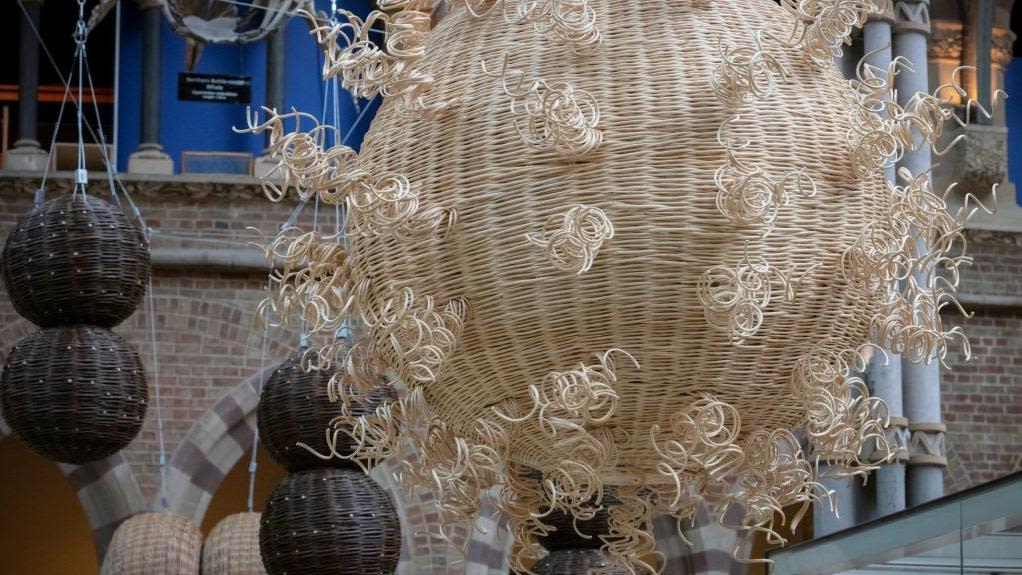

The installation was commissioned to mark the 30th anniversary of the Oxford Vaccine Group which was established in 1994, and set out to provide scientific research into the development and implementation of vaccines, in particular diseases for which there were at the time no effective vaccines.
The installation consists of six, three-dimensional sculptures woven in English willow, representing different diseases for which OVG has developed a vaccine: pneumonia, meningitis, typhoid, Covid, malaria and Ebola. Five of these will be suspended in the central room of the Museum, within the How Evolution Works gallery, with the sixth – a 2.4m long representation of Ebola weighing 75kg – lying at floor level.
‘For 30 years, OVG has been working at the forefront of vaccine research in the fight against these diseases and many others, saving millions of lives, and helping people of all ages live longer, happier and healthier lives,’ says Professor Pollard, Director of the Oxford Vaccine Group, ‘and it is really exciting to see Angela bring this to life in her artwork.’
more recommended stories
 T-bet and the Genetic Control of Memory B Cell Differentiation
T-bet and the Genetic Control of Memory B Cell DifferentiationIn a major advancement in immunology,.
 Ultra-Processed Foods May Harm Brain Health in Children
Ultra-Processed Foods May Harm Brain Health in ChildrenUltra-Processed Foods Linked to Cognitive and.
 Parkinson’s Disease Care Advances with Weekly Injectable
Parkinson’s Disease Care Advances with Weekly InjectableA new weekly injectable formulation of.
 Brain’s Biological Age Emerges as Key Health Risk Indicator
Brain’s Biological Age Emerges as Key Health Risk IndicatorClinical Significance of Brain Age in.
 Children’s Health in the United States is Declining!
Children’s Health in the United States is Declining!Summary: A comprehensive analysis of U.S..
 Autoimmune Disorders: ADA2 as a Therapeutic Target
Autoimmune Disorders: ADA2 as a Therapeutic TargetAdenosine deaminase 2 (ADA2) has emerged.
 Is Prediabetes Reversible through Exercise?
Is Prediabetes Reversible through Exercise?150 Minutes of Weekly Exercise May.
 New Blood Cancer Model Unveils Drug Resistance
New Blood Cancer Model Unveils Drug ResistanceNew Lab Model Reveals Gene Mutation.
 Healthy Habits Slash Diverticulitis Risk in Half: Clinical Insights
Healthy Habits Slash Diverticulitis Risk in Half: Clinical InsightsHealthy Habits Slash Diverticulitis Risk in.
 Caffeine and SIDS: A New Prevention Theory
Caffeine and SIDS: A New Prevention TheoryFor the first time in decades,.

Leave a Comment